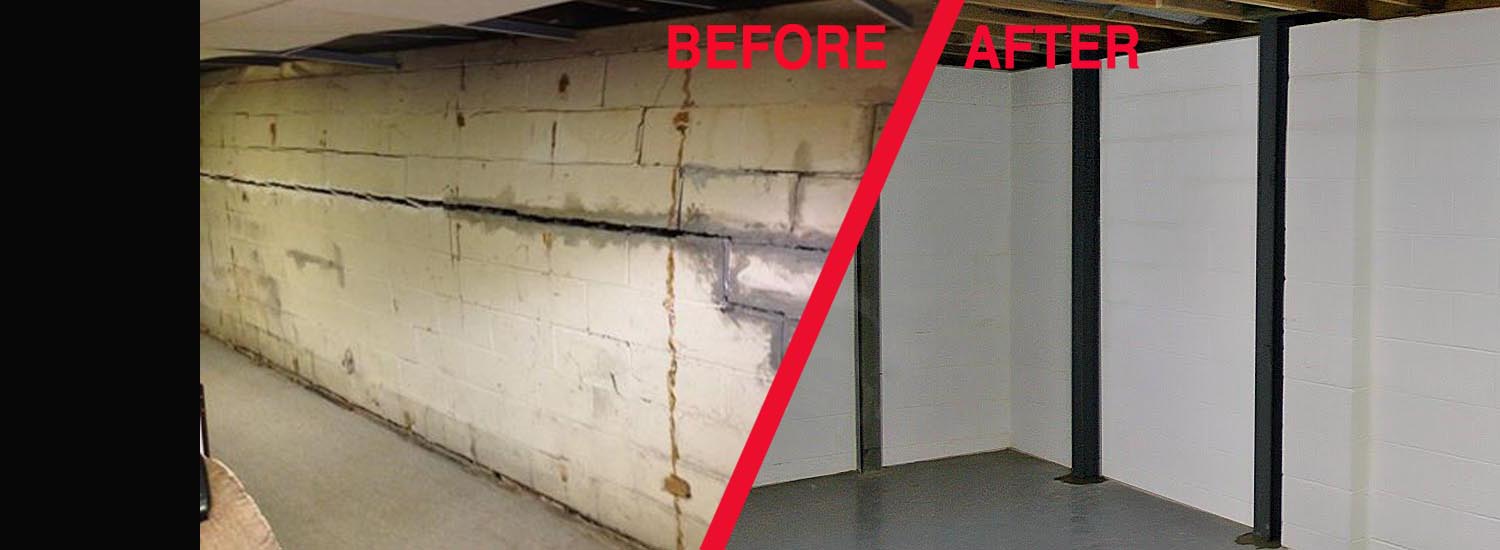Why Do Wisconsin Basements Leak?
Common Causes of Basement Moisture
Basement leaks are a common problem for homeowners in Wisconsin, driven by several contributing factors:
-
Wisconsin’s Climate: Heavy Rain and Snowmelt: Seasonal rainstorms and melting snow can overwhelm poorly designed drainage systems, leading to water intrusion.
-
Poor Drainage Around Foundations: Inadequate grading or clogged gutters can cause water to pool near the foundation.
-
Cracks in Basement Walls and Floors: Structural cracks provide easy entry points for water.
The Long-Term Risks of Ignoring a Wet Basement
Neglecting basement moisture can result in:
-
Mold and mildew growth, causing health issues.
-
Compromised structural integrity from prolonged water damage.
-
Decreased property value due to visible issues and musty odors.
Signs Your Basement Needs Waterproofing
Homeowners should act promptly if they notice these signs:
-
Musty Odors and Visible Mold: A persistent damp smell or visible mold colonies indicate moisture problems.
-
Water Pooling or Damp Spots: Puddles, wet spots, or staining on walls and floors signal leaks.
-
Efflorescence (White Mineral Deposits) on Walls: Salty residues are left behind as water evaporates from surfaces.
-
Increased Humidity and Difficulty Heating/Cooling: High moisture levels affect indoor comfort and HVAC efficiency.
Understanding Basement Waterproofing Methods
Waterproofing techniques vary based on the source and severity of leaks:
-
Exterior Waterproofing: Creating a Protective Barrier: Applying waterproof membranes and installing exterior drain tiles to stop water before it enters the basement.
-
Interior Waterproofing: Controlling Water Flow Inside: Using sump pumps, vapor barriers, and sealants to manage interior moisture.
-
Hybrid Systems for Comprehensive Moisture Control: Combining exterior and interior methods for optimal results.
Sump Pump Installation: A Key Waterproofing Tool
A sump pump is essential for removing excess water from basements:
-
How Sump Pumps Work: These systems collect and pump water away from the home’s foundation.
-
Choosing the Right Sump Pump for Your Home: Options include pedestal pumps and submersible models, each with unique benefits.
-
Maintenance Tips for Long-Term Reliability: Regularly clean the pump, check the float switch, and test the backup power system.
-
Cost Considerations for Installation: Sump pump installations typically range from $1,000 to $3,000, depending on system complexity.
The Role of Drain Tile Systems in Basement Waterproofing
Drain tiles are vital for redirecting water away from the foundation:
-
What Is a Drain Tile System?: A network of perforated pipes that collect and channel water to a sump pump or drainage outlet.
-
Benefits of Interior vs. Exterior Drain Tiles: Interior systems are easier to install, while exterior systems provide robust protection.
-
How Drain Tiles Help with Water Redirection: These systems prevent water from accumulating around the foundation.
-
Installing or Upgrading Drain Tile Systems in Milwaukee: Professional contractors ensure proper installation tailored to Wisconsin’s unique soil and weather conditions.
Other Solutions for Controlling Basement Moisture
In addition to waterproofing systems, other measures help keep basements dry:
-
Dehumidifiers for Climate Control: Reduce humidity levels to prevent mold and improve air quality.
-
Basement Sealing and Crack Repair: Sealants and epoxy injections fill cracks to block water entry.
-
Waterproof Paint and Its Limitations: While it offers a temporary fix, paint doesn’t address underlying issues.
-
Landscape Adjustments to Improve Drainage: Grading the yard and planting water-absorbing vegetation direct water away from the home.
When to Call a Waterproofing Contractor
Knowing when to seek professional help ensures the problem is effectively resolved:
-
DIY Fixes vs. Professional Expertise: While small cracks might be manageable, significant leaks require expert intervention.
-
Choosing a Wisconsin-Based Waterproofing Contractor: Look for local companies with experience in addressing regional challenges.
-
Questions to Ask During a Consultation: Inquire about warranties, methods, and cost estimates.
-
Red Flags to Avoid When Hiring Contractors: Be wary of vague contracts, lack of licensing, or overly low bids.
Basement Waterproofing Success Stories in Wisconsin
Real-life examples showcase the value of waterproofing solutions:
-
Real-World Examples of Effective Waterproofing: Wisconsin homeowners have successfully used sump pumps, drain tiles, and exterior waterproofing.
-
Homeowners’ Experiences with Sump Pumps and Drain Tiles: Testimonials highlight the reliability and peace of mind these systems provide.
-
Cost Savings from Proactive Waterproofing Measures: Preventing water damage reduces repair expenses and improves property value.
Preventative Maintenance for a Dry Basement
Regular care keeps waterproofing systems functional:
-
Regular Inspections for Potential Leaks: Periodic checks identify early signs of moisture issues.
-
Gutter Cleaning and Water Diversion Tips: Ensure gutters and downspouts direct water far from the foundation.
-
Seasonal Preparation for Snowmelt and Rainstorms: Addressing potential risks before the seasons change minimizes problems.
-
Keeping Sump Pumps and Drain Tiles in Top Condition: Routine maintenance ensures continuous operation.
Planning for Long-Term Basement Health
Proactive planning secures a home’s basement for years to come:
-
Adapting to Wisconsin’s Changing Climate: Stay informed about weather trends to prepare for increased rainfall or snowmelt.
-
Upgrading Systems as Homes Age: Replacing outdated systems prevents unexpected failures.
-
Benefits of Lifetime Waterproofing Warranties: Many contractors offer guarantees that provide long-term peace of mind.
By understanding the causes of basement leaks and investing in effective waterproofing solutions, Wisconsin homeowners can protect their properties from costly water damage. Combining proactive maintenance with professional installations ensures a dry, comfortable basement for years to come.


Recent Comments